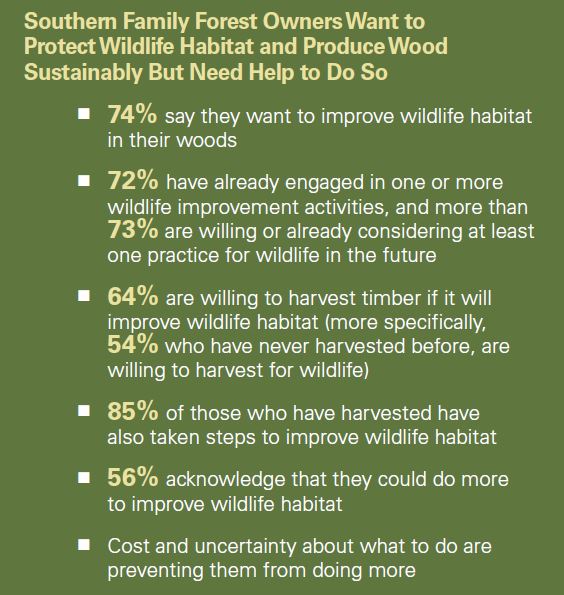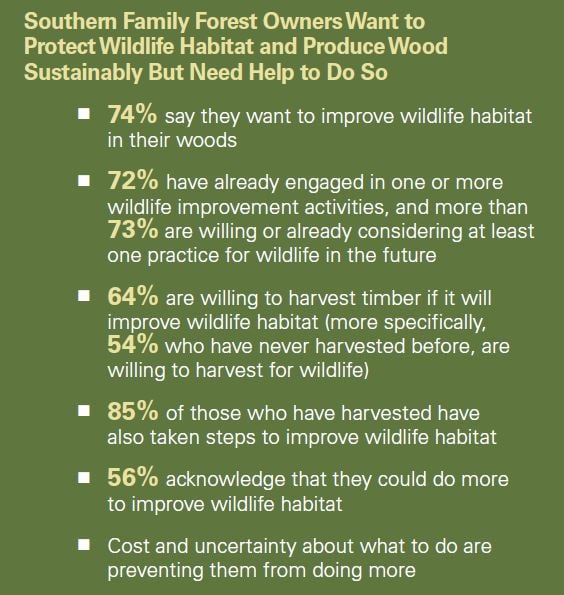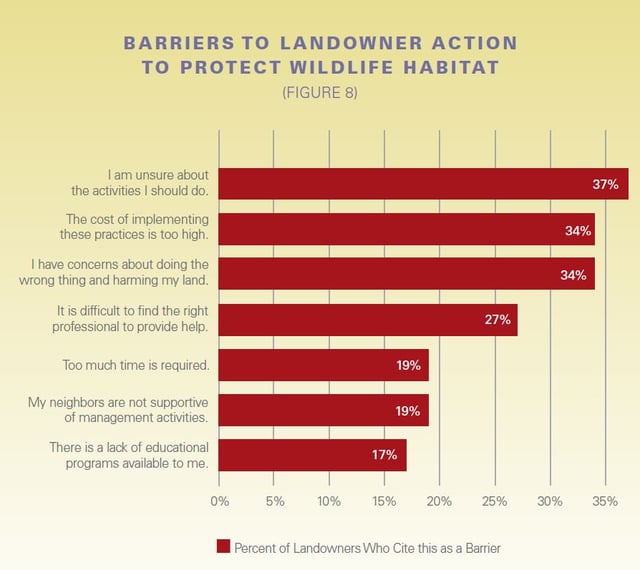3 min read
AFF Report Highlights Need for Wildlife Conservation in Southern Working Forests
John Greene
:
September 20, 2016

Permanently converting valuable forestland to neighborhoods and shopping malls, or allowing national forests to become dangerous tinderboxes of wildfire fuel are destructive patterns of land management. The beauty of working forests is that they prevent the “either/or” predicament from ever taking place if they are allowed to remain working forests. As we recently reported, working forests benefit us all and provide irreplaceable environmental, economic and public benefits on an enormous scale.
A recent report from the American Forest Foundation (AFF) provides fresh insights into bridging the gaps that exist between effectively managing working forests and wildlife conservation efforts.
Working Forests for Wildlife
The report focuses on forestlands within the US South, which are an economic engine that support 1.1 million jobs and contribute more than $230 billion to the region’s economy while producing 57 percent of the nation’s wood. Across the 13 southeastern states, these forests also rank at the top in terms of biodiversity when measured by the number of wildlife and plant species they are home to.
But, due to forest conversion to non-forest uses such as agricultural land, housing development and commercial expansion, fragmented waterways, natural fire suppression and an influx of invasive species, a significant number of the US South’s wildlife species are now at risk. Currently, there are 224 forest-dependent species listed as endangered or threatened, with 293 candidate and petitioned species that could be listed in the near future.
According to AFF’s report, Southern Wildlife At Risk: Family Forest Owners Offer a Solution family landowners, who own the majority (58 percent) of forests in the South, are key to providing forested habitat for at-risk species. Eighty-seven percent of landowners in the South say that protecting and improving wildlife habitat is the top reason they own land. In addition, 73 percent state that they want to do more on their land for wildlife in the future. Landowners cite an uncertainty about whether they are doing right by their land, difficulty finding support and the cost of management, as primary barriers.
 Source: American Forest Foundation (AFF)
Source: American Forest Foundation (AFF)
“AFF’s report shows that family landowners need to be a key piece of any proactive conservation strategy to improve and restore wildlife habitat,” said Bob Farris, State Forester of Georgia. “If we can help these families get engaged and address stressors on wildlife with practices such as invasive species control, stream crossing repairs, restoring tree species, active forest management and more, we can better protect our at-risk species.”
Most importantly, AFF’s report also highlights that it is possible to both protect at-risk wildlife and continue to meet the demands for wood from family lands. Contrary to popular belief, landowners that harvest or thin their forests are actually doing more for wildlife; 85 percent of those who have harvested have also implemented other wildlife-improvement activities, compared to 62 percent by those who haven't harvested.
“This isn’t your typical conservation versus industry story, it’s a conservation and industry story,” said Tom Martin, President and CEO of AFF. “Landowners who harvest are primed to do more for wildlife because they are already working with foresters or other professionals, and have access to information. And it’s forest products markets that help landowners finanically overcome cost barriers and allow them to conduct more management.”
 Source: American Forest Foundation (AFF)
Source: American Forest Foundation (AFF)
While there are many strategies to achieve these dual objectives, AFF’s report focuses on those that have the greatest potential for on-the-ground progress toward long-term success across the South. AFF recommends three strategies that will improve wildlife habitat, as well as provide sustainable wood supplies from family forests:
- Develop, invest in, and implement landscape-scale landowner outreach and engagement strategies to provide educational, technical and financial support for practices that improve at-risk wildlife habitat and produce sustainable wood supplies.
- Promote forest product purchasing that supports sustainable management of Southern family forests.
- Provide funding and policy tools that support family forest landowner engagement, promote markets for sustainably-produced wood and paper products, and encourage voluntary conservation efforts for at-risk wildlife.
The good news is that most family landowners want to help wildlife, and those who harvest timber are also implementing wildlife practices. However, many landowners are not actively managing their forests on an ongoing basis even though a majority acknowledges that they could do more to protect and improve habitat. This is because they are unclear about what practices to put in place, or they lack financial resources to perform these practices. The opportunity gap between what family forest owners are doing and what they want to do opens the door to an outreach and education program aimed at overcoming those barriers.
AFF’s spatial analysis identified 183 priority counties across the South, and more than 35 million acres of family forest lands where high-value wildlife habitat overlaps with important wood supplies. By aggregating priority counties into three Opportunity Areas, AFF and its partners will be able to target resources in a way that meets the goals of protecting wildlife habitat while also meeting demand for sustainably-produced Southern wood products.
Visit the American Forest Foundation for more information, or read the full report.





